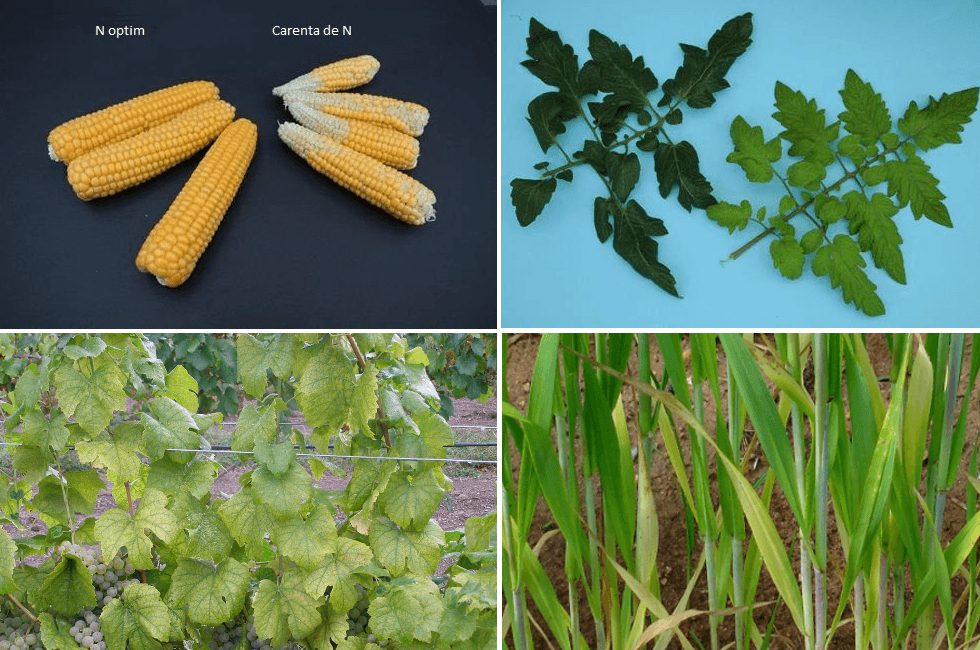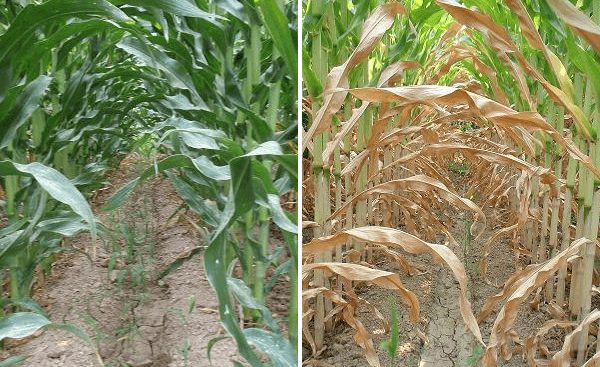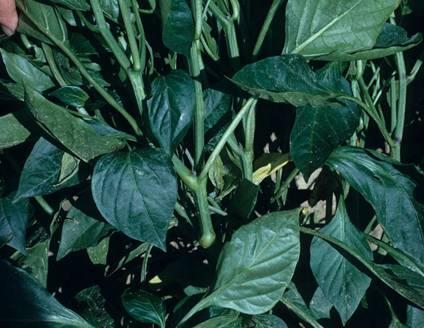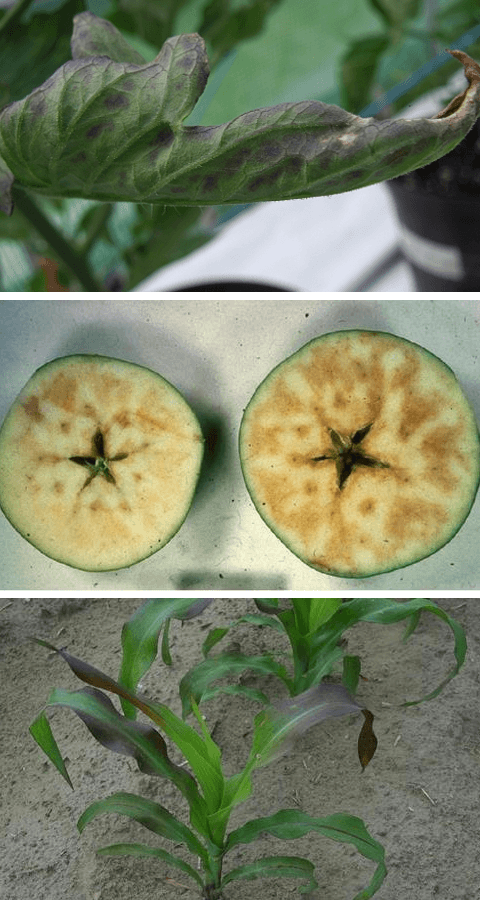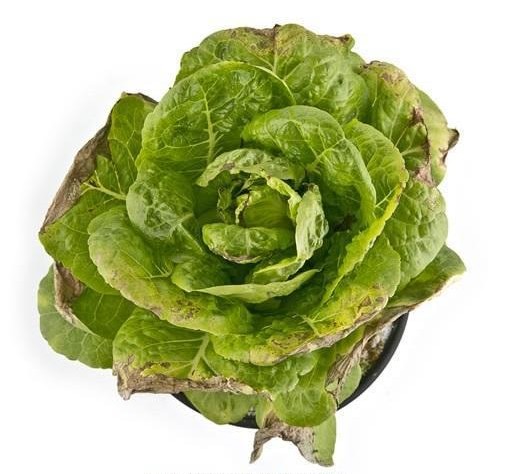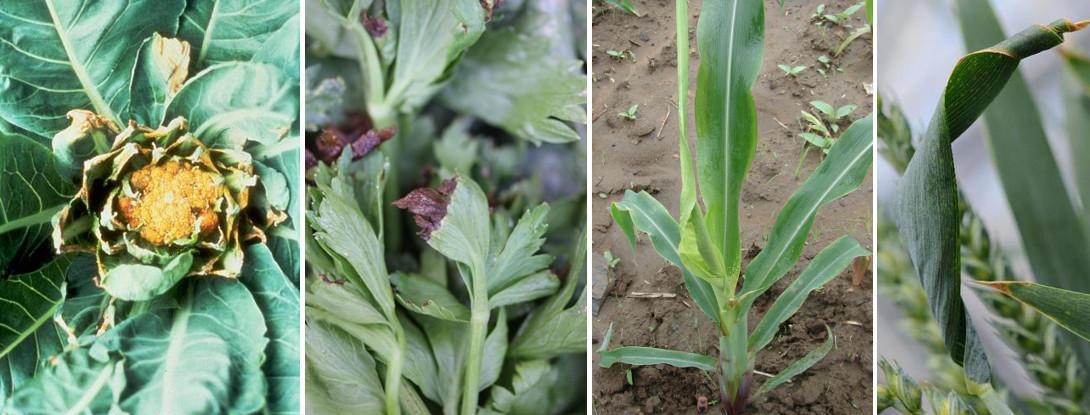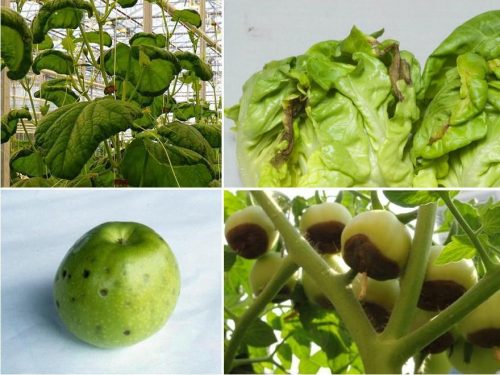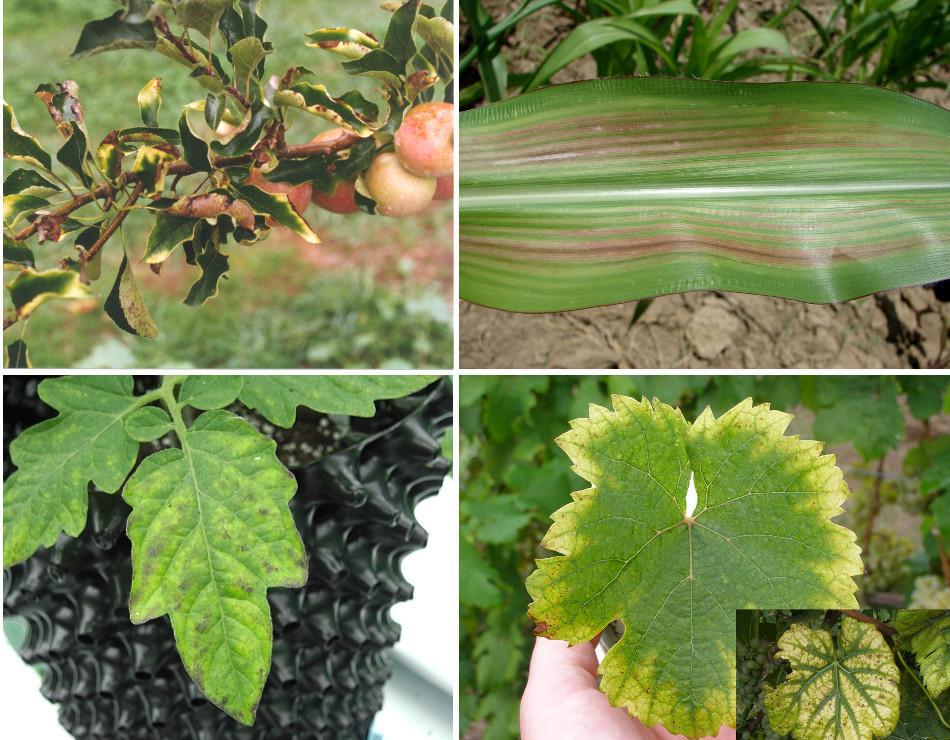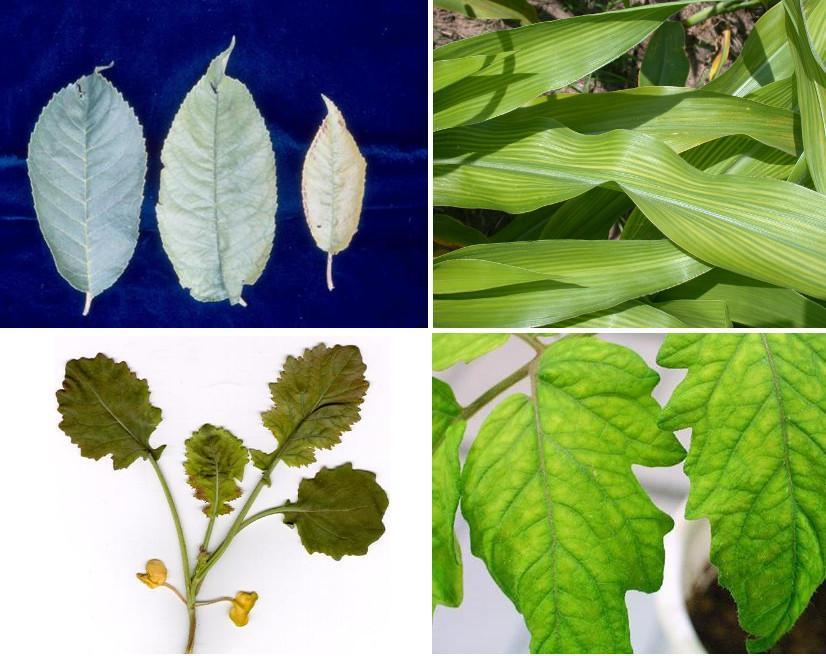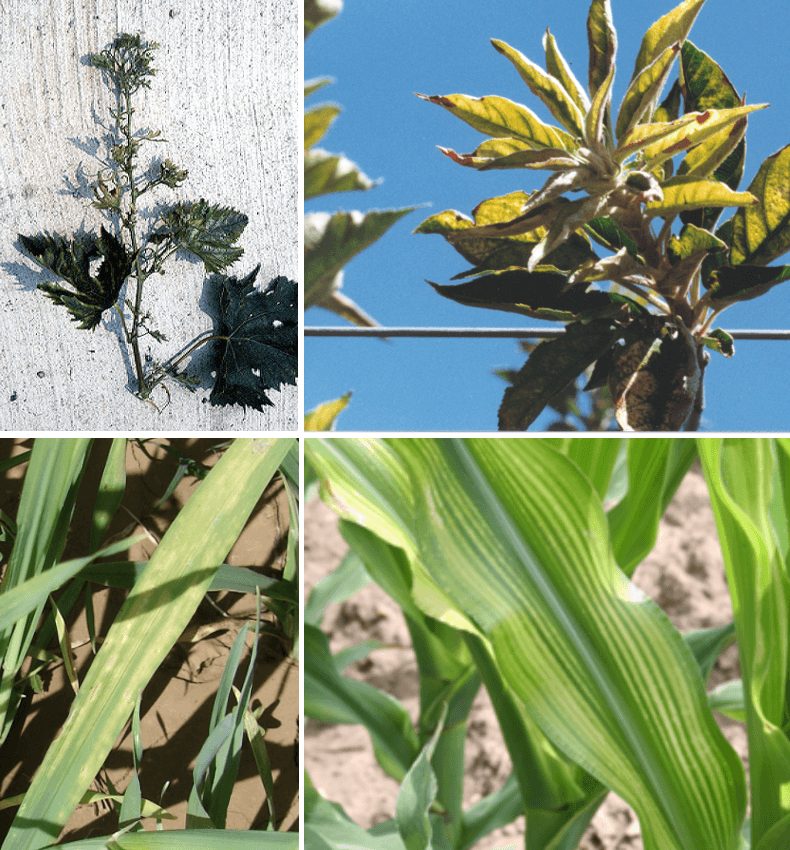Nutrient deficiency and excess in plants
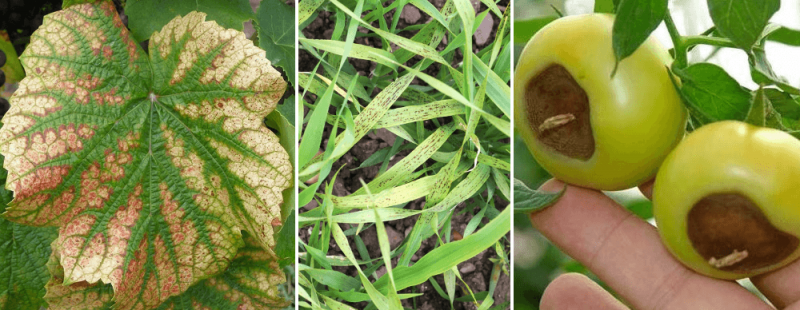
Plant cultivation involves ensuring optimal growing conditions and protecting them from diseases and pests. Often the symptoms of certain disorders can be confused with those caused by the presence of pathogens, thus applying the treatments of a misdiagnosis. The correct diagnosis of a nutrient deficiency is important in maintaining the growth and development of plants and drawing up an effective fertilization plan. Disorders caused by environmental factors (light, temperature, humidity, drafts) can also cause imbalances in plants.
Fertilizers are natural or synthetic products that are applied in the soil, on the soil, or on the plant to supplement the soil’s nutrient supply and to ensure the normal growth of plants. Each element has a certain role in the metabolism of the plant and is needed in a certain amount.
Depending on the amount needed by the plants, the nutrients are divided into:
- macro elements: primary (N, P, K) and secondary (S, Ca, Mg);
- microelements: Fe, Mn, Zn, B, Mo, Cu.
Macro elements are applied in doses of tens or even hundreds of kilograms of active substance, usually every year.
The microelements are applied in doses of a few kilograms of active substance/ha, every few years.
Of all the elements, the nutrition deficiency with N is the most widespread, and among the microelements, it is that of B.
NITROGEN (N)
It is an essential element that influences the production of vegetables by helping develop the vegetative part of the plants. Thus, it is considered an element of growth.
Nitrogen deficiency
Due to the high mobility in the plant and the possibility of translocation, the symptoms of nitrogen deficiency appear first on the mature leaves, from the base of the plant or the shoots, and extend to those at the top, if the deficiency persists. Nitrogen deficiency causes low growth rates (small amounts of biomass and harvest) and the shortening of the growing season, with negative effects on production.
Symptoms
- long roots with few branches;
- the leaves turn yellow, starting from the top and edges, then wither and finally dry out, having a yellow-brown color;
- yellowing may be followed by premature defoliation of plants;
- the young leaves, at the top of the stem, are pale green and tend to be smaller;
- in some species, the leaves have the main vein (on the underside) and the petiole red or purple-red;
- branching is reduced, the plants remain small, with a thin stem;
- flowering is weak and occurs late;
- in corn, chlorosis starts at the top of the leaf and advances towards its base in the shape of the letter V, with the tip on the main vein;
- in tomatoes and cucumbers, the lack of nitrogen leads to fewer leaves.
In order to prevent the occurrence of deficiencies, periodical administrations of organic fertilizers and the annual use of nitrogen fertilizers in optimal doses, divided accordingly, are recommended. Foliar fertilizers are administered at the same time as the application of phytosanitary products. In case of incorporation of plant debris in the soil, the nitrogen dose is supplemented with 6-7 kg N / ton of incorporated plant debris.
To correct the deficiency, apply chemical fertilizers with nitrogen, either in the soil, by incorporating them, with the irrigation water or through foliar fertilization, repeated at intervals of 8-10 days.
Excessive nitrogen
Symptoms appear on the mature leaves at the base of the plant, as well. The leaves are yellow-green, have a “scalded” appearance, and burn on the leaves’ tips and edges.
In case of a moderate excess:
- the plants have thick, rigid stems, the leaves grow strongly and have an intense green color;
- in grapevines and trees the wood does not mature enough and the plants become vulnerable to frost;
- the flowering and ripening of the fruit is delayed;
- for cereals, the resistance of the grains to falling decreases;
- vegetables and fruits aren’t as tasty, the firmness of the pulp decreases, as well as the resistance to transport and storage.
To prevent the occurrence of excess N, it is recommended to dose correctly the organic and chemical fertilizers, fractionation, and uniform application in the field.
In case of excessive nitrogen, controlled irrigation can be done, with a norm of water that distributes the nitrogen in a larger volume of soil.
PHOSPHORUS (P)
This element has a key role in plant metabolism, participating in the most important physiological processes. Phosphorus gives plants resistance to drought, stimulates the development of the root system, and contributes to the process of fruiting and seed formation. In straw cereals, phosphorus stimulates tillering.
Phosphorus deficiency
Deficiency symptoms are manifested from the base of the plant to the top. Low temperatures reduce the mobility of phosphorus in the soil, while drought and soil compaction reduce its diffusion into the soil.
Symptoms
- the root system is poorly developed, slightly branched, the secondary roots are few and short;
- the plants are small and grow very hard, the branching is reduced;
- the leaves have a dark green color, with a dirty appearance, then acquire reddish, purple reflections, especially on the underside of the leaves, on the veins and petioles (tomatoes, lettuce, corn, cabbage);
- the stems are reddish-purple;
- flowering is delayed;
- in apple trees, the accumulation of too low quantities of phosphorus in the fruit leads to the browning of the pulp during their storage at low temperatures;
- in the case of straw cereals the tillering is weak;
- protein synthesis and gluten content in wheat grains are reduced;
- in corn, the formation of inflorescences is inhibited.
To prevent phosphorus deficiency, it is recommended to dose the fertilizers correctly and to apply the products uniformly. Irrigation is also recommended in case of drought, along with weed control.
To correct the deficiency, it is recommended to incorporate phosphorus fertilizers into the soil or a foliar application.
Excessive phosphorus
It is rarely encountered, being facilitated by deficient nutrition with Zn. It is characterized by necrosis on the tip and edges of the basal leaves.
POTASSIUM (K)
It is a macro element that contributes to the resistance of plants to frost and drought and influences the color of the finished product.
Potassium deficiency
It is usually encountered in acidic soils, with a light, sandy texture.
Being very mobile in plants, potassium migrates easily from the old leaves to the young ones, in order to be reused by them. Thus, the symptoms first appear on the leaves at the base of the plant or shoots. The deficiency of this element greatly decreases the production of cabbage, cucumbers, and tomatoes.
Symptoms
- chlorosis appears on the leaves at the top and edge, progressing towards the main vein and the base of the leaf, followed by brown necrosis;
- the edges of the leaves roll;
- flowering is weak, flowers remain sterile, and often the percentage of flowers that fall prematurely is higher;
- in tomatoes, the basal leaves turn yellow, after which the yellow areas turn brown, the fruits ripen unevenly and have green veins on the inside;
- in cucumbers, bulb-shaped fruits appear (swollen at the top and thin at the stalk);
- in salads, the leaves are dark green and the old ones will become necrosed on the edges;
- in celery, the root remains small and is sometimes empty on the inside.
In order to prevent the appearance of potassium deficiency, it is recommended to dose the fertilizers correctly and to apply the products uniformly. Irrigation is also recommended in conditions of drought, as well as avoiding water puddles.
Excessive potassium
Excessive potassium causes secondary deficiencies of Ca and Mg.
CALCIUM (Ca)
It is one of the basic macro elements needed to ensure the mechanical strength of the tissues, being involved in the physiological processes of the plants. Calcium favorably influences root growth. This element, once integrated into the tissue, cannot be translocated and reused in young tissues, its deficiency being manifested on the growth tips, in the center of the leaf rosettes, at the fruit level, towards the flower.
Calcium deficiency
Calcium absorption can be influenced by many factors:
- high temperatures during the hot summer periods;
- low soil temperatures, in the case of early crops;
- excessive fertilization with N, especially ammonia;
- poor or incorrect watering (administration in large quantities, every few days);
- high salt levels in the soil due to excessive soil fertilization.
Symptoms
- the top area of the plant is affected, softening, browning and collapse of young tissues from the top of the plant;
- in cabbage, internal browning of the head occurs;
- in greenhouse vegetables (tomatoes, peppers, eggplants, cucumbers, melons), the apical rot of the fruit occurs, the tissue collapses in the form of a slight depression in the pulp (“blossom end rot”). The affected area is subsequently slightly infected by fungi of the genus Alternaria spp.;
- in tomatoes, the flowers fall and the fruits are black on the inside;
- in cucumbers the fruits bend or fall;
- apples and pears have round spots, superficial at first, which turn brown, become slightly deeper and the tissue has a bitter taste. This disturbance begins in the field and continues in storage (bitter pit);
- in apples, calcium deficiency can also cause internal browning of the fruit;
- celery displays the “black heart” symptom;
- in potatoes and onions, the plants become dwarfed.
To prevent calcium deficiency, it is recommended to supply the plants with adequate and constant amounts of water, preferably through the drip irrigation system. Shading nets are placed on hot summer days and plowing is done to aerate the soil. Fertilization with calcium products administered in the soil or foliar control the occurrence of calcium deficiencies.
In the case of excessive calcium, there are induced deficiencies of various elements: B, Mn, Fe, Mg, K, and their characteristic symptoms.
MAGNESIUM (Mg)
It is considered an essential element in plant growth because it helps strengthen the cell walls and it improves the absorption of other elements in plants. Magnesium is a component of chlorophyll.
Magnesium deficiency
Due to the high mobility of this element, the deficiency first manifests in the leaves at the base of the plant and then advances towards those at the top.
Symptoms
- on the leaves appear marginal chlorosis or mosaic-looking spots between the veins, in shades of yellow-green, due to the decomposition of chlorophyll;
- the chlorosis advances from the edge of the leaf to the center, sometimes followed by necrosis;
- the main veins and a strip along them remain green long after the appearance of chlorosis;
- in some species (potato, cucumber, tomato) chlorosis starts from the middle of the leaf and advances towards the edges;
To prevent magnesium deficiency, apply regular organic fertilizers or chemical fertilizers with Mg and avoid overfertilization with potassium.
Excessive Mg causes secondary deficiencies of K, Ca, Mn.
SULFUR (S)
Sulfur is an essential nutrient, which activates many enzymatic processes in plants and is a component part of glycosides, which give the characteristic smell of mustard, onion, and garlic plants.
Sulfur deficiency
Sulfur deficiency is similar to nitrogen deficiency. Due to the reduced mobility in the plant, the sulfur is not translocated from the mature leaves to the young ones. Deficiency symptoms first appear on young leaves and gradually spread to the base of the plant (as opposed to N).
Insufficient nutrition with sulfur occurs especially in very humid areas, on soils with high permeability, in which the element infiltrates the deep layers of the soil. Large sulfur-consuming species (white cabbage, onions, sunflowers, mustard, parsnips, rapeseed, beets) are more prone to deficiencies. Insufficient sulfur supply has the effect of slowing down or even stopping the plant’s growth.
Symptoms
- uniform chlorosis appears on the leaves, green-yellow or yellow, no necrosis occurs and the plants do not lose their leaves prematurely;
- in wheat, sulfur deficiency leads to a decrease in the baking quality of the flour, sulfur directly influencing the composition of gluten proteins;
- in rapeseed, sulfur deficiency is manifested by discoloration of the leaves and flowers and the siliques stop growing or do not develop normally;
- in grapevine, the growth of both the aerial and the root system is affected;
- the shoots of the grapevine remain smaller than normal, the mature leaves do not reach the usual size;
To prevent sulfur deficiencies, it is recommended to apply organic fertilizers periodically, correct the sizing of nitrogen doses and maintain the appropriate humidity in the soil.
Excessive sulfur does not generally harm plants. Only very high concentrations are harmful. Acid rains in which sulfur oxides are dissolved can cause burns on the leaves.
BORON (B)
Boron improves fertility. Of all the trace elements, boron deficiency is the most common.
Boron deficiency
Deficiency occurs first on the growth tips and young leaves, due to the low mobility of this element.
Symptoms
- deficiency causes the formation of scarce roots;
- the young leaves at the top of the plant are the first to be affected, curl up, become fragile and display irregular necrosis between the veins;
- flowering is stopped;
- often occurs the fall of flower buds, flowers and developing fruits;
- the stigmas and pollen can become sterile, with no fertilization, leading to seedless fruits;
- internal cavities form in celery;
- in grapevine, the berries remain small or are seedless;
- in flowering plants, the flowers are smaller, discolored and deformed;
- in apple and pear trees, on the fruits develop spots that give them a bitter taste;
- in tomatoes, the calyx frequently becomes larger;
- in cauliflower, the inflorescence turns brown and the leaves curl up;
- cauliflower, cabbage and broccoli stems show cavities inside;
- in strawberries, the fruits are deformed.
To prevent boron deficiency, it is recommended to apply fertilizers with high boron content. Natural fertilizers also have beneficial effects. Avoid excessive doses of additions of limestone on acidic soils and ensure proper soil moisture through irrigation. Applied during flowering, it favors the flowering and fertilization processes.
Excessive boron first manifests on mature leaves and spreads to young ones. Symptoms appear on the tip and edge of the leaves through chlorosis in spots, stripes, or stains, followed by necrosis. Symptoms of toxicity may be confused with symptoms of high salinity.
COPPER (Cu)
Copper plays a role in the formation of chlorophyll, in the germination of seeds, in the increase of drought resistance, and in the water supply of plants. Copper also plays a role in respiration and protein synthesis.
Copper deficiency
It appears especially in sandy soils, in those with a high content of organic matter, the soils of greenhouses, and polyhouses in which large amounts of organic matter and peat have been added. High doses of N, P, Zn favor or accentuate copper deficiency.
The deficiency of this element can reduce the harvest by 20 to 100%. Symptoms first appear on the top of the plants or shoots, at the tips of the leaves.
Symptoms
- usually, the apical meristem will necrotize and perish;
- in monocotyledons, the young leaves stop growing, become whitish and curl up starting from the tip;
- cereals are more prone to fall, develop few and sterile flowers, the inflorescences are deformed and the grain ripening is delayed;
- in the case of fruit trees, the leaves of the annual shoots prematurely fall. They also brake and die more easily;
- the bark of trees is often rough and has gummy exudates through the cracks.
The prevention of copper deficiency is achieved by periodically administering fertilizers in the soil or foliar. Copper fungicide treatments can prevent the deficiency.
Excessive copper manifests through chlorosis on mature leaves. Chlorosis is followed by necrosis starting from the tip and edges and continuing to the main vein. Toxicity is rare, especially in vineyards where many copper-based fungicides are used.
IRON (Fe)
Iron plays a vital role in the synthesis of chlorophyll, in the process of respiration, and in nitrogen fixation.
Iron deficiency
The mobility of iron in the plant is reduced. It cannot be reused from the mature leaves in case of deficiency, so the symptoms appear on the young leaves and on the top parts.
Symptoms
- the young leaves are green-yellow and the areas between the veins become yellow or white-yellow;
- usually the main veins, sometimes the secondary ones as well, remain green;
- chlorosis can even cover the veins but no necrosis occurs;
- the leaves may become completely whitish and have the tendency to pile up together;
- in monocotyledons, chlorosis appears longitudinally on half of the leaf or in the form of yellow stripes, which alternate with green stripes along the leaf;
- iron chlorosis is common in fruit trees and grapevines;
- in trees, shoots can become defoliated;
- trees and grapevines are poorly developed and fruit poorly.
Iron deficiency occurs in plants that prefer an acidic or slightly acidic pH and are grown on neutral or alkaline soil. Iron deficiency manifested through chlorosis occurs especially in the case of calcareous and bicarbonate-rich soils. Excessive P au Mn can cause iron deficiency or its accentuation. Soil compaction or a soil pH above 7 also leads to iron deficiency symptoms.
The deficiency can be prevented and corrected by applying iron fertilizers.
The symptoms of iron deficiency can be confused with the symptoms of Mg, Zn, or Mn deficiency. Still, only the Fe deficiency manifests initially on the young leaves, the others manifesting initially on the mature leaves.
Toxicity is usually a problem in submerged soils or in hydroculture, where anaerobic, reducing conditions favor an increase in iron content. The toxicity in soils with excessive moisture can be avoided through the addition of limestone, drainage, and loosening works.
MANGANESE (Mn)
This element determines a better resistance of the plants to low temperatures, to drought, and to the presence of salts in large quantities in the soil.
Manganese deficiency
Manganese deficiency manifests in the case of sensitive crops, especially those adapted to acidic or weakly acidic soils and grown on neutral or alkaline soils, where the mobility of manganese is greatly reduced.
The deficiency occurs in the form of chlorosis between the veins, similar to those specific to Mg deficiency, with the difference that it first manifests on the young leaves at the top and then extends to the base of the plant.
Symptoms
- in gramineous plants, a yellow-gray chlorosis between the veins appears, in the form of elongated spots or stains, which turn brown and merge;
- in dicotyledons, a mosaic chlorosis occurs (the smallest veins usually remain green);
- punctiform necrosis developed in chlorosed areas can sometimes perforate the leaves;
- the flowering of the plants is weak and takes place late;
- corn cobs do not produce grains at the base;
- in carrots, the main root remains small, thin and branched, developing many secondary roots;
- in fruit trees, chlorosis looks like a fish skeleton.
To prevent a manganese deficiency, manganese fertilizers are applied to the soil, along with ammoniacal nitrogen fertilizers, with acidifying effect, in the case of neutral and alkaline soils. When deficiency symptoms occur, foliar fertilization has to be applied. The treatments have to be repeated because, not being a mobile element, the deficiency can occur in the new growths as well.
Excessive manganese
The accumulation of manganese in the superficial tissues of the stem and petiole of the leaves leads to the appearance of dark brown spots and stains. In fruit trees, the bark becomes rough, cracks appear on the trunk and the young branches are accompanied by gummy secretions. In the axillary area of the leaves, many shoots that look like witch brooms are developed. Dark brown spots appear on the old leaves, surrounded by chlorotic areas. Toxicity symptoms occur in plants adapted to soils with neutral or slightly alkaline pH and cultivated in acidic soil, with high concentrations of active Mn. Soil acidification increases the mobility of manganese. In case of toxicity, it is recommended to apply additions of limestone that cause the Mn precipitation.
MOLYBDENUM (Mo)
Molybdenum has a role in fixing molecular nitrogen, in protein and other compounds synthesis. Also, this element induces the resistance of sunflower, alfalfa, and lettuce to powdery mildew, while corn becomes more resistant to the appearance of smut.
Molybdenum deficiency
The sensitivity of plants to molybdenum deficiency depends on the species. Vegetables, which need molybdenum to fix nitrogen in their nodules and crucifers, are very sensitive.
Molybdenum deficiency manifests similarly to that of N, through chlorosis in mature leaves, but it is quickly followed by necrosis on the tip and edge of the leaves; the edges of the leaves roll towards the topside.
Symptoms
- in general, the plants are small in size due to short nodes, manifesting the symptom of dwarfism;
- the development of flowers or pollen is affected, which prevents the formation of fruit;
- in vegetables, the symptoms are typical of N deficiency, the roots have few nodules and are green when cut;
- in crucifers, leaves with an atrophied foliar limb develop;
- in cauliflower, the inflorescence does not develop or it is distorted;
- in roses, the flowers are faintly colored and the outer petals roll outwards.
Molybdenum deficiencies are usually associated with a soil pH below 5.5. In order to prevent the occurrence of such a deficiency, additions of limestone are applied to correct the acidity.
Excessive molybdenum manifests on young leaves by disturbing the growth of the foliar limb. The leaves are deformed and have a golden-yellow color. The apical buds perish and only the axillary buds develop.
ZINC (Zn)
Plants that are well supplied with zinc are resistant to powdery mildew. This element has an inhibitory effect on the development of fungi. Applying Zn chelates may reduce or prevent the onset of virosis in plants.
Zinc deficiency
The symptoms of deficiency manifested from the top of the plant to its base, zinc being an element with reduced mobility.
Symptoms
- stagnation, short nodes on the stems and shoots;
- chlorotic staining appears on the leaves, quickly followed by necrosis of different sizes, while the veins remain green;
- flowering is weak;
- in dicotyledons the leaves are arranged in a rosette and those at the top of the stems are very small;
- the rosette symptom occurs in trees, the leaves are small, chlorosed;
- flower species have few flowers, of poor quality.
In order to prevent the occurrence of zinc deficiency, fertilizations have to be carried out periodically with natural fertilizers, P should be applied in balanced doses and the air and water regime of the soil has to be optimized. In case of deficiency symptoms, repeated foliar spraying with Zn-containing fertilizers must be performed.
Toxicity rarely occurs in field crops but can appear in greenhouse crops and it manifests through reduced leaf and root growth, followed by chlorosis of leaves and sometimes reddish-brown pigmentation of plants. In case of toxicity, additions of limestone are recommended.














































































































































































































































































































































































































































